When the desert receives a timely rain, a magical transformation occurs. Arid landscapes burst into vibrant carpets of wildflowers, a spectacle of nature’s resilience. These remarkable plants, perfectly adapted to their harsh environment, seize the opportunity to grow, flower, and seed before the intense summer heat returns. This year, nature delivered a particularly generous rainfall, igniting an extraordinary desert bloom. We eagerly ventured out to witness this breathtaking display, exploring locations renowned for their wildflower abundance, including Anza Borrego Desert, Boyce Thompson Arboretum near Superior, and our beloved Catalina State Park and Pima Canyon, revisiting trails we’d frequented throughout the spring in anticipation of this floral explosion.
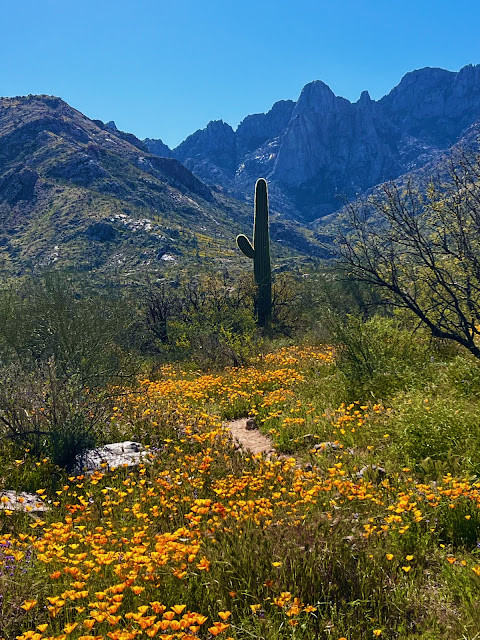 Prolific Mexican Gold Poppies and Desert Wildflowers
Prolific Mexican Gold Poppies and Desert Wildflowers
The Golden Hues of Mexican Poppy
The Mexican poppy, scientifically known as Eschscholzia californica ssp mexicana, also commonly referred to as the Gold poppy, dominates our local desert wildflower scene with its sheer abundance. Closely related to the California poppy, it distinguishes itself by the absence of the small green sepal beneath its vibrant petals. These prolific annual desert flowers paint the landscape in brilliant shades of gold and yellow, creating expansive fields of color that are truly mesmerizing.
 Golden Mexican Poppies Intermingling with Owl's Clover Wildflowers
Golden Mexican Poppies Intermingling with Owl's Clover Wildflowers
Often seen intermingling with the gold poppies is owl’s clover, Castilleja exerta. Its vibrant purple spikes provide a stunning contrast to the golden hues, adding another layer of visual interest to the desert tapestry. Observing these color combinations truly highlights the artistry of nature.
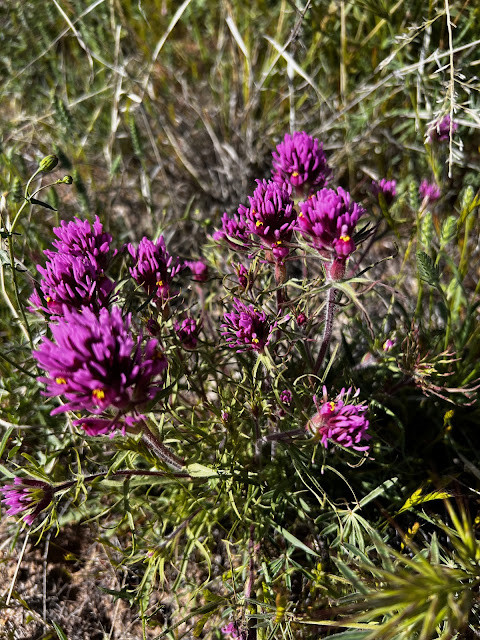 Owl's Clover Wildflowers Accentuate a Desert Landscape
Owl's Clover Wildflowers Accentuate a Desert Landscape
The first time I encountered owl’s clover, its appearance immediately reminded me of Indian paintbrush, and my botanical intuition proved correct. They belong to the same family, Orobanchaceae, sharing similar floral structures and parasitic tendencies, drawing nutrients from the roots of other plants.
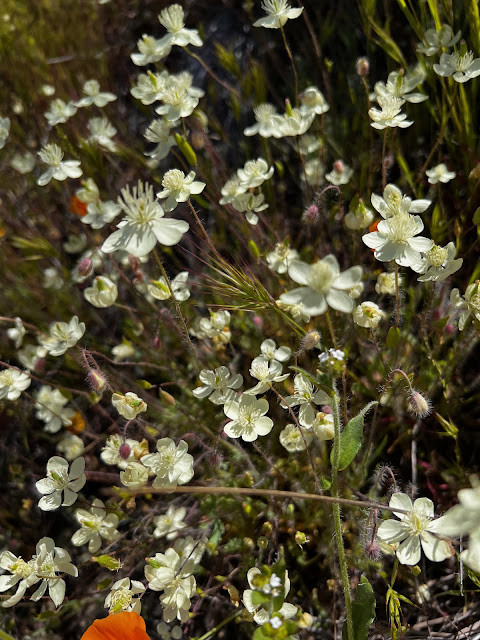 Cream Cups Wildflowers Blooming in a Desert Meadow
Cream Cups Wildflowers Blooming in a Desert Meadow
Delicate Cream Cups and Desert Zinnias
Cream cups, Platystemum californicus, add a touch of delicate beauty to the wildflower display. Often found blooming alongside the poppies, they favor open, hillside meadow areas. Where conditions are just right, they flourish in large swathes, their petals unfurling to greet the sun and remaining closed on overcast days, a charming example of plant behavior adapting to its environment.
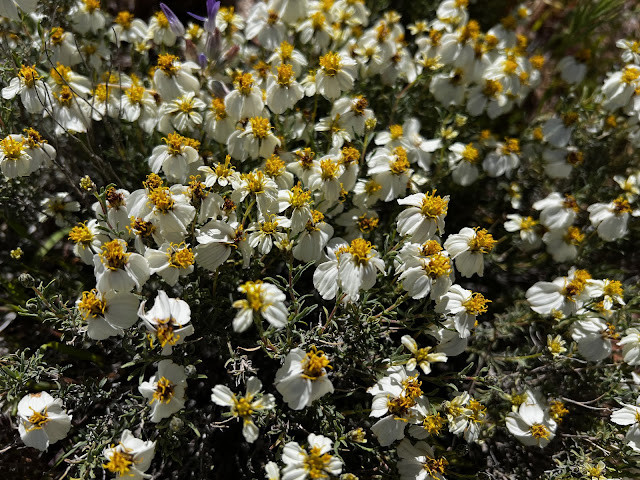 Abundant Cream Cups Wildflowers in Full Bloom
Abundant Cream Cups Wildflowers in Full Bloom
The desert zinnia, Zinnia acerosa, has earned a spot on my seed wish list. I envision creating a small wildflower patch in my garden, hoping to cultivate a miniature version of this desert spectacle at home. This particular hike, already a favorite, was elevated to another level of enjoyment by the wildflowers, adding an extra layer of joy to the already superb scenery. At this time of year, water gently trickles down the mountains, collecting in natural pools known as bathtub tanks, further enhancing the beauty of the landscape.
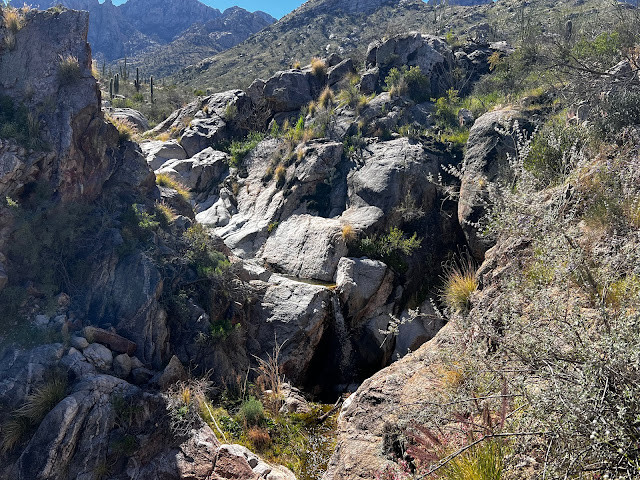 Bathtub Tanks Pool Reflecting the Desert Landscape.jpeg)
Bathtub Tanks Pool Reflecting the Desert Landscape.jpeg)
Scorpion Weed and Roadside Blooms
Another wildflower making a bold statement this spring is the scorpion weed, Phacelia distans. When found in large aggregations, its delicate blue-purple flowers create a truly captivating visual impact, adding a cool color palette to the warmer tones of the poppies and cream cups.
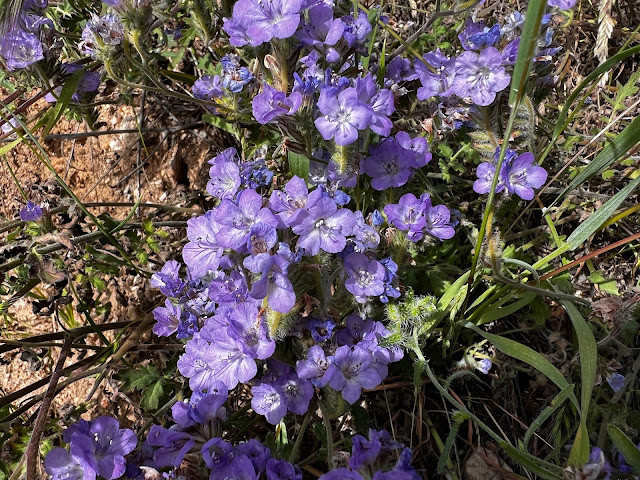 Masses of Scorpion Weed Wildflowers in Bloom
Masses of Scorpion Weed Wildflowers in Bloom
Certain wildflower varieties thrive along roadsides, benefitting from slightly increased rainfall runoff. Among these are the Arizona lupine, mallows, and penstemons. Arizona lupines, Lupinus arizonicus, while reminiscent of Texas bluebonnets, exhibit subtle differences: they tend to be taller, with finer leaves and smaller, more upright flower spikes.
 Arizona Lupin Wildflowers Blooming by the Roadside.jpeg)
Arizona Lupin Wildflowers Blooming by the Roadside.jpeg)
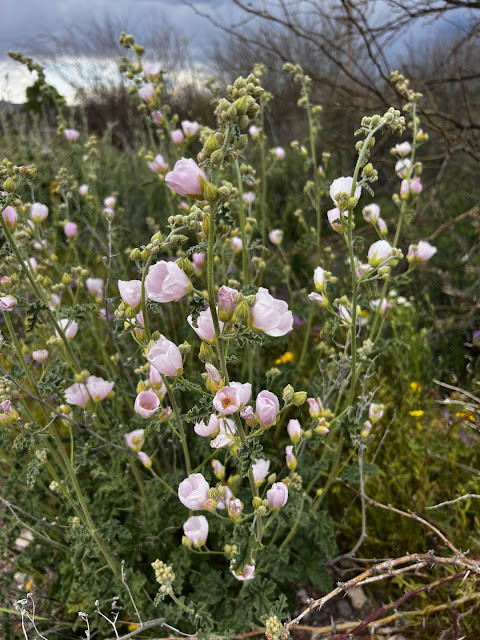 Close-up of Arizona Lupin Wildflower Details.jpeg)
Close-up of Arizona Lupin Wildflower Details.jpeg)
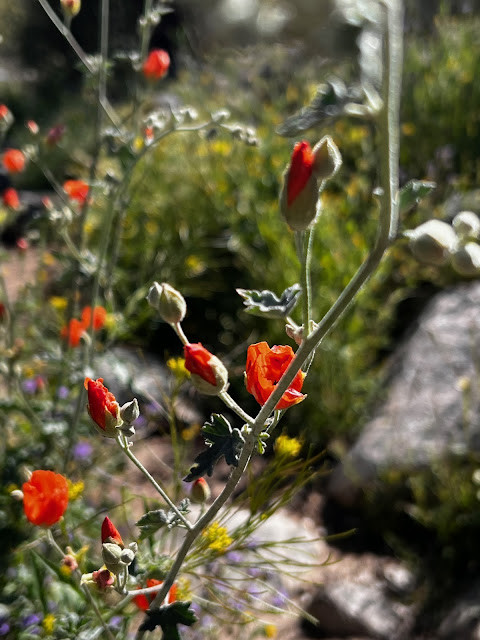 Mallow Wildflower in the Desert Landscape
Mallow Wildflower in the Desert Landscape
Mallow, Sphaeralcea ambigua, adds to this roadside spectacle. Desert chicory, Rafinesquia neomexicana, is another common sight, particularly abundant in washes and on hillsides. Its showy white blooms are especially striking when found clustered together.
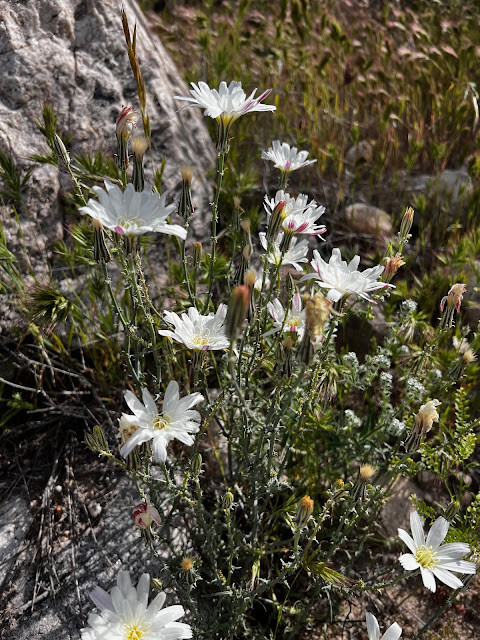 Desert Chicory Wildflowers Clustered Together
Desert Chicory Wildflowers Clustered Together
Each hike during this vibrant spring season brought the joy of discovering new wildflower varieties, adding to my growing list of flowers that bravely bloom under the desert’s challenging conditions. Witnessing this resilience is truly inspiring.
 Diverse Desert Wildflowers Blooming in Spring
Diverse Desert Wildflowers Blooming in Spring
Brittlebush and the Anza Borrego Bloom
As the gold poppies begin to fade, the brittlebush, Encelia farinosa, bursts into its own flowering season. This perennial shrub, reaching heights of around 3 feet, readily self-seeds. Its landscape potential is often overlooked; surprisingly, in our neighborhood filled with professionally maintained gardens, brittlebush is a rare sight, likely due to the prevalent use of pre-emergent herbicides preventing its germination. In contrast, my garden embraces the brittlebush, with numerous blooming specimens appearing each year, becoming so abundant that I can selectively manage its growth.
However, for the most spectacular wildflower carpets, our visit to the Anza Borrego Desert proved unparalleled. It was a spontaneous decision, packing the car for a quick overnight trip with picnic essentials, heading west towards the Salton Sea. Our only previous visit was a Thanksgiving trip in our VW camper back in 1981 – a trip we vividly remembered for the early darkness, campfire restrictions, solitude, and unexpected cold. Despite the chilly night, the next day’s hike was enjoyable, sparking a determination to return during a more favorable season. It only took 43 years to fulfill that intention!
Henderson Canyon was our target destination, and it exceeded all expectations.
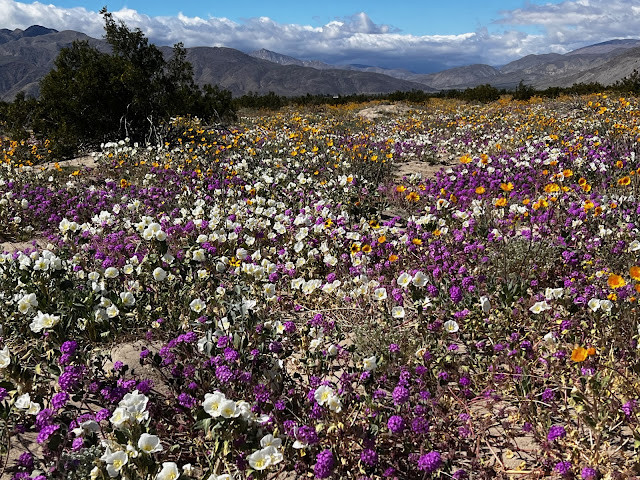 Vast Carpet of Wildflowers in Henderson Canyon, Anza Borrego
Vast Carpet of Wildflowers in Henderson Canyon, Anza Borrego
 Close-up of Colorful Wildflowers in Anza Borrego Desert
Close-up of Colorful Wildflowers in Anza Borrego Desert
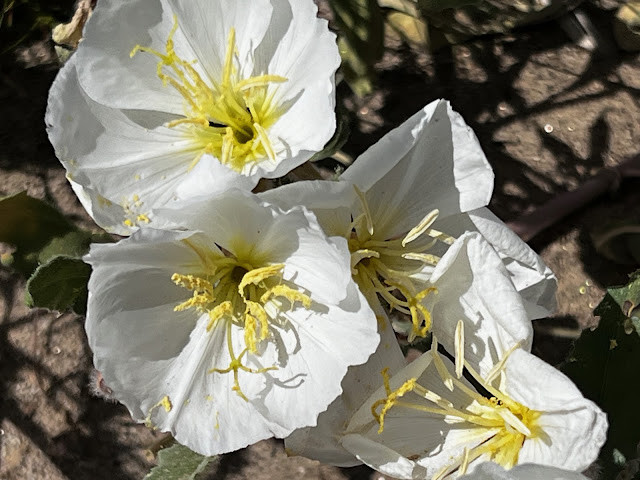 Expansive Field of Desert Wildflowers at Anza Borrego
Expansive Field of Desert Wildflowers at Anza Borrego
The wind was incredibly strong, making it a challenge to photograph the flowers without blur. Finding shelter behind larger creosote bushes became the best strategy. We were so captivated that we planned to return the following day.
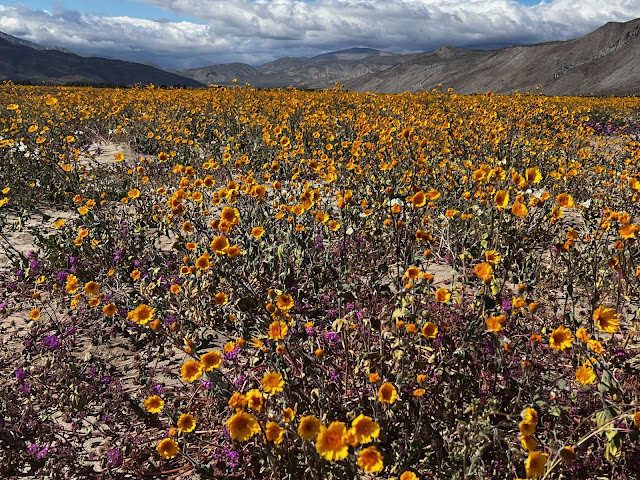 Windy Conditions in a Desert Wildflower Field
Windy Conditions in a Desert Wildflower Field
Discovering the Desert Lily
I was particularly eager to spot the desert lily, Hesperocallis undulata. An Instagram post had alerted me to its presence, providing the motivation to actively search for it. Driving slowly, I scanned the landscape, my eyes trained to recognize the distinctive open lily shape from the car. When I spotted one, we would stop and walk back for a closer look. The desert lilies we found stood about 1 foot tall, though I’ve heard they can reach up to 3 feet in more ideal conditions.
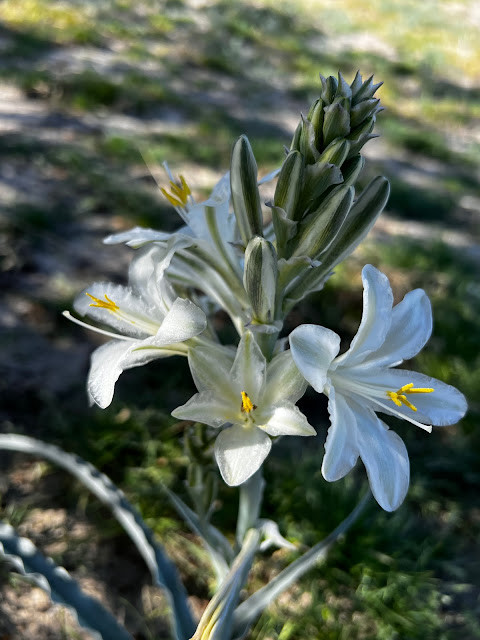 Elegant Desert Lily Wildflower in Bloom
Elegant Desert Lily Wildflower in Bloom
The question arose: how can such delicate beauty emerge from this seemingly barren, cracked earth? The contrast is part of the desert’s allure.
 Cracked Desert Earth Giving Way to Wildflower Blooms
Cracked Desert Earth Giving Way to Wildflower Blooms
We spent the night in Indio and returned to Anza Borrego the next morning. The wind had subsided, and the fragrance emanating from the fields of wildflowers was intoxicating. Afterward, we explored the desert sculptures we had heard about, first stopping at the Friday market in Borrego Springs.
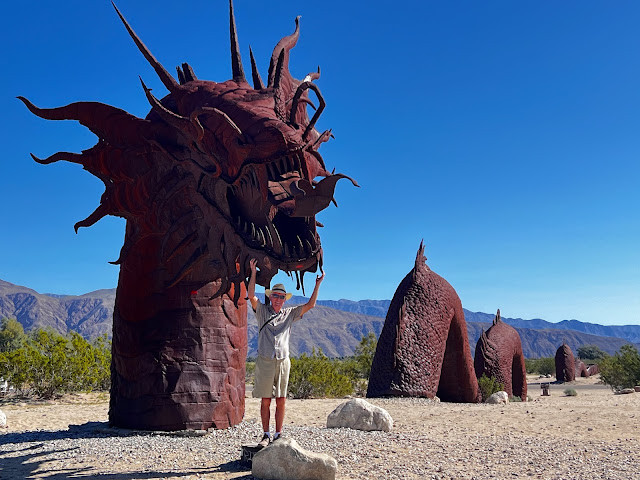 Desert Metal Serpent Sculpture in Borrego Springs
Desert Metal Serpent Sculpture in Borrego Springs
The serpent or dragon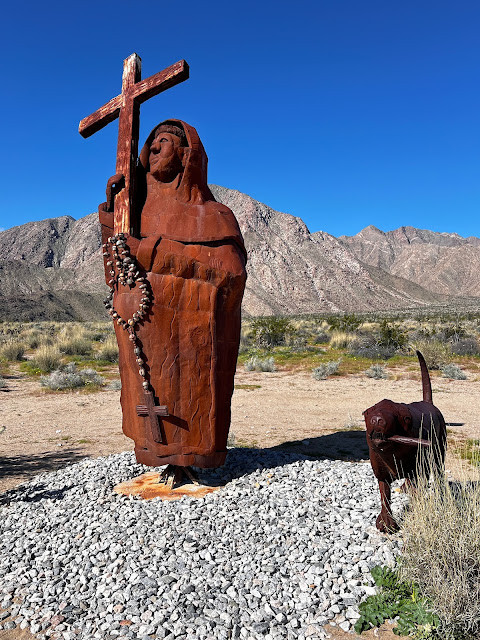 Desert Metal Sculpture of a Spanish Priest
Desert Metal Sculpture of a Spanish Priest
The Spanish priest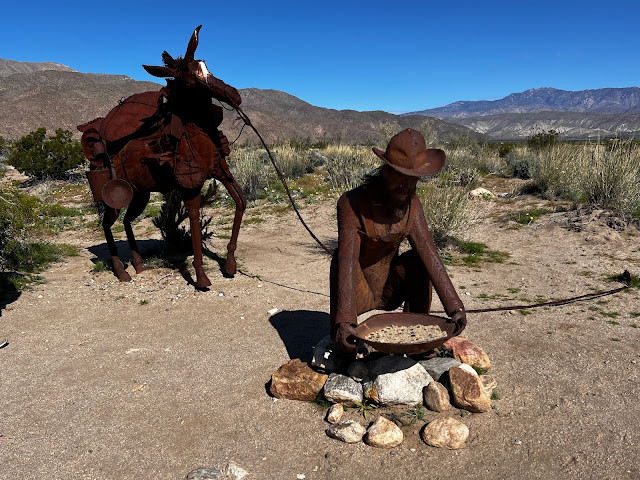 Desert Metal Sculpture of a Gold Miner
Desert Metal Sculpture of a Gold Miner
The gold miner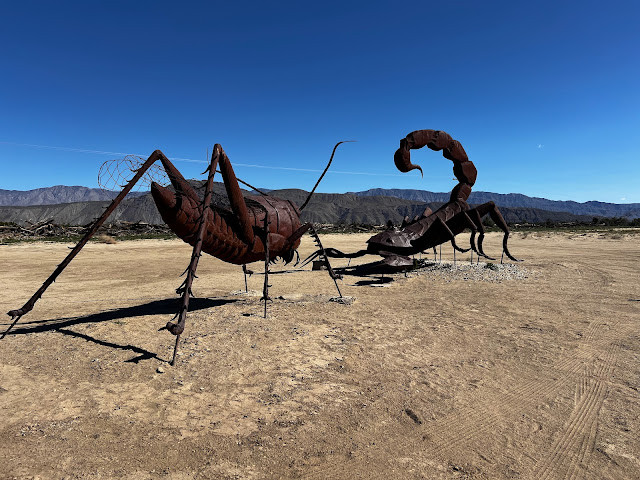 Desert Metal Sculpture of a Scorpion and Grasshopper
Desert Metal Sculpture of a Scorpion and Grasshopper
The scorpion and the grasshopperOver 100 metal sculptures by Ricardo Breceda are scattered across 1500 acres of undeveloped land, gifted to the town by benefactor Dennis Avery. These are just a few of our favorites, depicting a diverse array of animals, including camels, sloths, tigers, pigs, sheep, tortoises, the dragon pictured above, and even the Spanish explorer Juan Bautista de Anza.
The Anza Borrego desert is largely surrounded by BLM land, offering ample camping opportunities. While many visitors enjoy exploring the desert trails with all-terrain vehicles, our preference leans towards dry camping within the park’s designated campsites. We are already planning a return trip next year to further explore the hiking trails.
Before the long six-hour drive home, we briefly visited the trailhead of a slot canyon hike. Unprepared for a hike without boots or poles, we ventured a short distance before encountering a 5-foot drop that prompted us to turn back. “Next time,” we resolved!
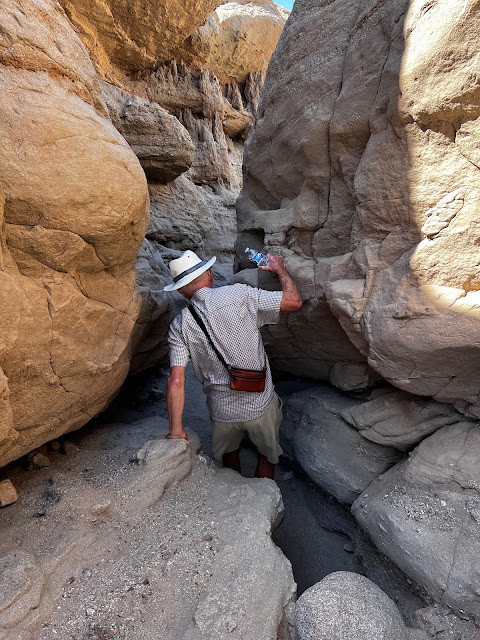 Entrance to a Desert Slot Canyon Hike
Entrance to a Desert Slot Canyon Hike
 Desert Landscape with Blooming Wildflowers.jpeg)
Desert Landscape with Blooming Wildflowers.jpeg)
In conclusion, despite the long drives, the experience of witnessing the desert in full bloom was undeniably worthwhile. The vibrant colors, delicate fragrances, and sheer abundance of wildflowers created a truly unforgettable springtime journey.